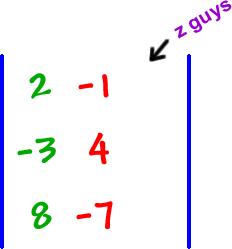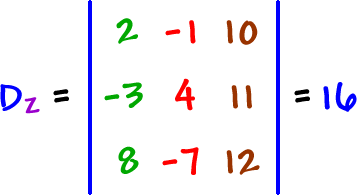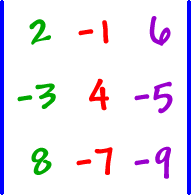|
Finally, for |
|
: |
You know how this is going to work...
Take D...
|
|
and delete the column with the z guys... |
 |
Replace the column with the "= guys"...


So, our final answer is

Cramer's Rule is
great, but crunching a bunch of 3
x 3 determinants takes a long
time and there are only about 6 billion places to make mistakes.
On the other hand, doing elimination with messy fractions like these
can't be a pretty thing. The moral here is, if the numbers
aren't super clean, solving 3 x 3
is hard!
YOUR TURN (and good luck!):
Solve using Cramer's Rule:
![]()
![]()
![]()
